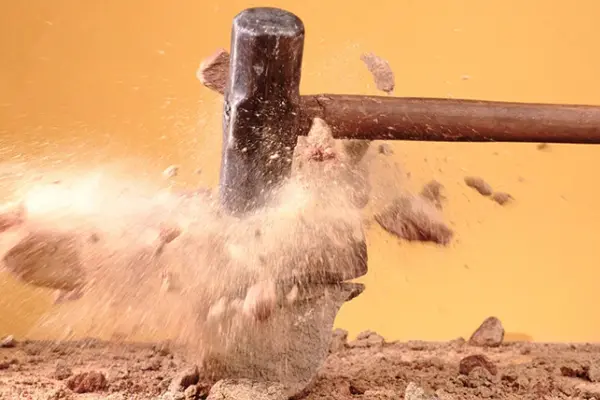Sledgehammers are powerful tools, often associated with brute force and durability. These heavy-duty hammers are commonly used for demolition work, breaking through concrete, or driving stakes into the ground. But can a sledgehammer break metal? To answer this question, we need to consider the properties of metal, the mechanics of the sledgehammer, and the context in which such a task might be attempted.
Understanding Metal Properties
Metal is a versatile material with varying levels of hardness, ductility, and tensile strength depending on its type and purpose. Metals like aluminum are relatively soft and malleable, while steel, especially hardened steel, is tough and resistant to impact. Cast iron, on the other hand, is hard but brittle, meaning it can break under sufficient force but doesn’t bend easily.
The behavior of metal under impact depends on its composition and structure. For instance:
- Ductile Metals (e.g., copper, aluminum): These metals absorb energy by deforming rather than breaking.
- Brittle Metals (e.g., cast iron): These are more likely to crack or shatter when struck.
- Hardened Metals (e.g., tool steel): These resist deformation and require significant force to break or damage.
The Mechanics of a Sledgehammer
A sledgehammer works by delivering high-impact force through its heavy head, which is often made of steel, and its long handle that allows for maximum leverage. The kinetic energy generated by swinging a sledgehammer is sufficient to break brittle materials like concrete or masonry. However, breaking metal presents a different challenge due to its structural integrity and strength.
Key factors influencing a sledgehammer's ability to break metal include:
- Weight of the Sledgehammer: Heavier hammers generate more force on impact.
- Swing Velocity: A faster swing increases the hammer’s kinetic energy.
- Target Metal's Thickness and Composition: Thin or brittle metals are easier to break compared to thick, ductile ones.
Can a Sledgehammer Break Metal?
The answer depends on the type of metal and the conditions of the impact:
- Brittle Metals: A sledgehammer can easily break brittle metals such as cast iron. When struck with sufficient force, these metals crack or shatter because they cannot absorb the energy effectively.
- Thin Sheets of Metal: If the metal is thin, such as sheet metal or aluminum panels, a sledgehammer can tear or puncture it with ease. However, the metal may bend before breaking completely.
- Ductile Metals: Breaking ductile metals like copper or aluminum with a sledgehammer is challenging. These metals tend to deform or bend rather than break under impact. Repeated blows may eventually cause fatigue and failure, but this requires significant effort.
- Hardened or Thick Metals: Metals like steel beams or thick bars are highly resistant to breakage. A sledgehammer is unlikely to break such metals; instead, it might cause dents or surface damage. Specialized tools like cutting torches or hydraulic equipment are better suited for such tasks.

Practical Applications
While a sledgehammer is not the ideal tool for breaking most types of metal, it can be useful in certain scenarios:
- Demolition Work: Breaking metal components that are already weakened or part of a larger structure, such as cast iron pipes or lightweight frames.
- Metal Deformation: Bending or shaping metal, especially if precision is not required.
- Removing Rusted or Brittle Fasteners: In situations where bolts or fittings have become brittle due to rust, a sledgehammer can break them apart.
Limitations and Risks
Using a sledgehammer on metal comes with some risks:
- Shrapnel: Striking metal can create dangerous flying fragments, especially with brittle materials. Always wear protective gear.
- Tool Damage: Repeated impacts on hardened or thick metals can damage the sledgehammer itself, particularly if the hammerhead or handle isn’t designed for such use.
- Inefficiency: For many metal-breaking tasks, specialized tools like angle grinders, plasma cutters, or hydraulic presses are far more effective and safer than a sledgehammer.
Conclusion
A sledgehammer can break metal under specific conditions, such as when dealing with brittle materials or thin sheets. However, its effectiveness largely depends on the type and thickness of the metal, as well as the force applied. While a sledgehammer excels in demolition work and breaking materials like concrete, it is not always the best tool for breaking metal. For tougher metals, more specialized tools are required to achieve the desired results efficiently and safely.
Before attempting to use a sledgehammer on metal, assess the material and task carefully, and prioritize safety by wearing appropriate protective gear.
Post time: 11-19-2024





